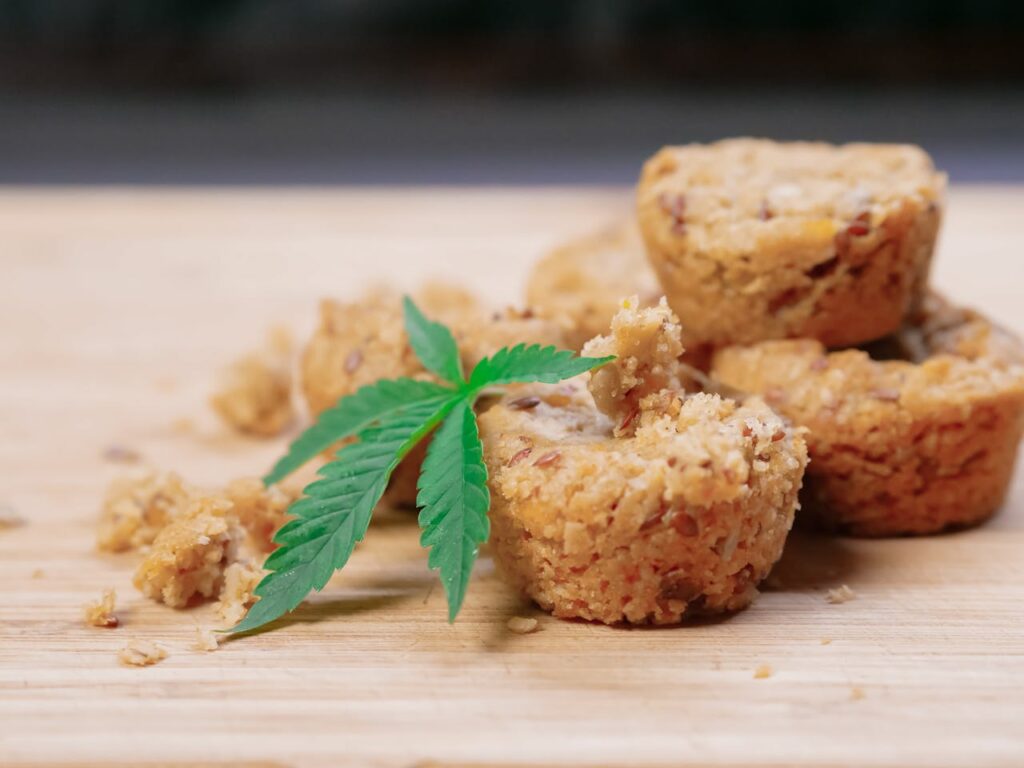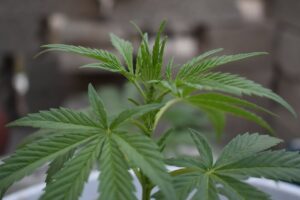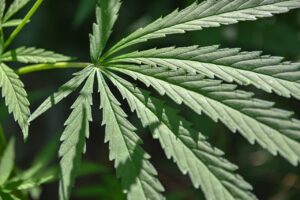Table of Contents
ToggleKey Takeaways
- Always begin with a low dose to gauge your tolerance and ensure that you don’t experience overpowering effects. Only increase gradually once you know how your body will respond.
- Mistake #1 — Not being patient Patience is key. You should wait a minimum of 1-2 hours for the effects to start before taking more. This helps avoid accidental overconsumption from the delayed onset.
- A little proper preparation goes a long way. Make sure you decarb cannabis properly to get that THC activated for the right potency in your edibles.
- Remember to store your edibles in airtight containers, away from light, heat, and moisture. Label them so someone else—say, a child or pet—does not accidentally eat them.
- Don’t combine cannabis edibles with alcohol or other intoxicants to avoid unpredictable and dangerous interactions.
- Use cannabis-infused edibles in a safe, familiar place. Know the laws and regulations within your area surrounding cannabis use.
Avoid these 5 common mistakes to have a more enjoyable time trying cannabis-infused edibles for the first time. These mistakes make the experience unpleasant and sometimes even frightening.
Learn what dosage levels should be and start with low amounts of THC. Allow for full onset times to sidestep these blunders. Understanding the contrast between smoking and edibles will further aid you in developing realistic expectations.
With a bit of preparation, you can guarantee a safer, far more pleasant experience with cannabis edibles.
What Are Cannabis Edibles
Cannabis edibles are food or beverage products that are made with cannabis extracts, which include compounds such as THC (tetrahydrocannabinol) and CBD (cannabidiol). These compounds interact with the body’s endocannabinoid system, producing effects that can vary from relaxation to more specific pain relief.
Edibles offer a different experience. They provide a smoke-free alternative to traditional cannabis consumption methods. This combination makes them a popular option for those looking for a discreet, lung-friendly option. Cannabis edibles are one of the most popular – and versatile – forms of cannabis. They’re a favorite among both recreational cannabis users and those looking to get the medicinal benefits of cannabis.
Definition And Types Of Edibles
Cannabis edibles encompass a wide range of products to fit any lifestyle and personal preference, including homemade marijuana edibles and commercially produced options. What are the different types of cannabis edibles? Common categories include homemade edibles, commercially produced products, and medical-grade options.
While cooking marijuana edibles at home can give users greater control over dosage and ingredients, the potency can vary widely from batch to batch. Commercially produced edibles—including gummies, chocolates, baked goods, and drinks—allow for accurate dosing. Available in delicious flavors like strawberry and lemonade, they’re a great option for newbies.
Medical edibles might be created with a more therapeutic intent. They tend to have well-balanced ratios of THC and CBD. The potency and flavor profiles of edibles vary quite a bit, with effective gummies offering a low starting point. For those new to cannabis, a gummy can be as low as 2.5 milligrams of THC, making it a perfect option.
Conversely, a chocolate bar can be more easily broken down into higher doses, providing 10 to 15 milligrams per square. The method used to infuse edibles also makes a significant difference. Edibles made with cannabis butter or oil may be harder to digest, while tincture-infused edibles tend to kick in more quickly.
These variations contribute to important differences both in the experience and the efficacy of the edible cannabis products.
How Cannabis Edibles Work In The Body
When you eat edibles, they affect you differently than smoking or vaping cannabis. Smoking and vaping introduce cannabinoids directly to your bloodstream via your lungs. Edibles have to pass through your entire digestive tract before they can work their magic.
Once ingested, the stomach and intestines begin to digest the edible, releasing cannabinoids, which are then absorbed into the bloodstream. The liver subsequently breaks down THC into 11-hydroxy-THC, a molecule famous for its greater intensity and more enduring high.
This digestion process is the reason why edibles take longer to kick in, usually around 30 minutes to 2 hours. Individual factors such as metabolism, body weight, and whether you’ve eaten beforehand can affect how quickly it kicks in.
This gradual impact requires some patience on your part, but it affords you a more prolonged and manageable ride. This is particularly helpful for medicinal users.
Differences Between Edibles And Other Methods
Dosing Cannabis edibles differs from inhalation methods not only in how they are consumed but also in the experiences they produce. Because it takes longer to feel the effect, smoking or vaping cannabis is great for people who want relief with a faster onset.
Edibles have a slow, creeping onset. Depending on the dosage and your tolerance, these effects can last anywhere from 4 to 8 hours, or longer. This long-lasting effect can make edibles a convenient option for patients who experience long-term pain or anxiety.
The experience itself, too, is more likely to vary. Though inhalation is going to give you a high that comes on more quickly and is more transient, edibles tend to bring on a deeper, more body-focused experience.
This quality makes them attractive for things such as relaxing after a stressful day or improving creative endeavors. For people with respiratory complications like COPD, edibles offer an alternative, inhalation-free method to use and experience the benefits of cannabis.
Benefits And Risks Of Cannabis Edibles
We recognize that cannabis edibles have become one of the hottest trends among recreational and medicinal users alike. They offer a convenient, discreet, and smoke-free way to consume cannabis, especially through cooking marijuana edibles. Although they have many benefits, they require special attention because of their hazards. With some awareness, you can make informed choices to get the most out of edibles and limit the risks.
Health Benefits Of Cannabis Edibles
One of the most notable benefits of marijuana edibles is their ability to provide relief from chronic conditions without subjecting users to the dangerous impacts of inhalation. For example, patients who live with chronic pain, arthritis, or other inflammatory diseases tend to prefer consuming edibles. These products are infused with cannabinoids, principally THC and CBD, which work to actively target pain at the source, interacting with your body’s endocannabinoid system to reduce inflammation and pain for lasting relief.
The versatility of cooking marijuana edibles allows for easy customization to suit a wide variety of dietary restrictions, making them an appealing option for any consumer. Whether you’re on a vegan, gluten-free, or low-sugar diet, we have you covered. Many dispensaries carry a wide variety of edibles, including CBD gummies, vegan brownies, and sugar-free lozenges, providing inclusivity and options.
Medical cannabis patients benefit from the precise dosing that edibles offer. Unlike smokeable cannabis products, edible cannabis products provide exact THC and CBD labeling, allowing users to better manage their doses. This is particularly important for those relying on cannabis to treat serious conditions like epilepsy or anxiety, where reliable dosing is critical to ensuring effective relief.
Additionally, the baking process involved in creating these delicious edibles can be tailored to individual taste preferences. By experimenting with various edible recipes, cannabis enthusiasts can create treats that not only provide medicinal benefits but also satisfy sweet cravings.
Overall, the ease of preparing edibles and the ability to control cannabinoid potency make them a popular choice among both recreational and medical users. As the weed edibles market continues to grow, so does the interest in discovering new recipes and methods for crafting quality cannabis products.
Potential Risks And Side Effects
While cannabis edibles offer several advantages, they do come with their own set of risks. Common adverse effects such as dizziness, paranoia, and tachycardia occur most frequently at higher doses. For instance, a 10-milligram dose of THC may feel just right for some users, but too much for others and it can drive them into an unpleasant episode.
Another major risk is in products that are mislabeled or improperly dosed. Homemade or unregulated edibles often do not have clear dosage instructions, leading to accidental overconsumption and intoxication. To prevent this from happening, only use products from trusted vendors that provide transparency on their cannabinoid dose.
Moderation is key to having a good time with edibles. Overconsumption, frequently because edibles take a while for effects to kick in, is a frequent pitfall. Unlike smoking or vaping where effects are felt immediately, edibles can take anywhere from 30 minutes to 2 hours to set in.
During this waiting period, consuming additional edibles can lead to an extreme high. That’s why it’s especially important to begin with a low dose and wait.
Factors That Influence Individual Reactions
Individual reactions to marijuana edibles can differ greatly based on body weight, metabolism, and tolerance level. For instance, a person with a quicker metabolism may start to feel the effects of an edible more quickly than someone with a slower metabolism. Likewise, a beginner in consuming edibles will have a lower tolerance and should start with smaller doses for safety.
The strain of cannabis used in the edible also makes a difference. The higher the strain of THC, the more euphoric effects you will achieve. A strain high in CBD can calm you down without the psychoactive effects.
By carefully reading product labels to identify the strain’s cannabinoid profile, users can better match their desired experience to their goals when preparing edibles. This understanding is crucial for both novice and experienced cannabis users alike.
Personal expectations and mindset significantly influence the edible experience. Approaching the experience with a peaceful and optimistic mindset usually enhances the benefits of cooking marijuana edibles. Conversely, anxiety or stress can heighten any discomfort that you might experience.
Being aware of your environment and the time of day can also contribute positively to the overall experience. This mindfulness can enhance the enjoyment of delicious edibles and help users achieve their desired effects more effectively.
Common Mistakes When Using Edibles
Cannabis-infused edibles offer a fun and delicious experience to enjoy the effects of cannabis. While this can be great, they can be quite difficult to navigate for inexperienced or experienced users alike. Misunderstanding and a lack of experience are the biggest causes of preventable mistakes.
With a little preparation and knowledge, you can avoid these mistakes with ease. Here, we’ll walk through some of the biggest mistakes and how to avoid them.
1. Consuming Too Much At Once
The first and most common error is taking too strong of a dose without consideration for personal tolerance. Everyone’s body metabolizes THC in different ways, and metabolism, body mass, and history of cannabis usage all factor in. For beginners, a dose of 2.5 to 5 milligrams of THC is a good place to start safely.
This gives you enough to get an idea of the effects without overloading your body’s system. Consuming excessive doses of marijuana edibles can result in a very unpleasant high. It can also induce anxiety and nausea, both of which wreck the experience.
For those making edibles, finding the right cannabis dosage in your edible infusion medium (like butter or oil, for instance) is equally important. A 60:40 ratio of cannabis to butter or oil often produces consistent results. Making the grind too fine can bring out more of the herbal taste, but it will also give your finished product an unpleasant green hue.
Shoot for a medium grind for ideal results.
2. Impatience For Effects To Start
Unlike smoking or vaping, the effects of edibles take much longer to kick in since THC is metabolized in the liver. These effects can take 30 minutes to 2 hours to start working. This timing can vary based on your metabolism and if you’ve eaten before consumption.
Impatience leads people to consume more before the initial dose has kicked in. This practice increases the chance of consuming too much. The important thing here is mindfulness.
After you’ve eaten your first dose, allow at least 1 to 2 hours to evaluate how your body is responding. This waiting period is crucial in helping you to not take too much. It will make your experience better overall, letting you feel the effects come on slowly so you’re not overwhelmed.
3. Not Decarboxylating Cannabis Properly
Decarboxylation is a crucial step when preparing edibles, particularly when cooking marijuana edibles. This process activates THC, the compound responsible for the high, so without proper decarboxylation, your raw bud won’t yield the desired effects.
To achieve effective gummies or other delicious edibles, proper decarboxylation generally requires heating the cannabis to a temperature of 220–240°F for 30–40 minutes. Cooking cannabis at excessively high temperatures can degrade THC, resulting in inconsistent potency, making it essential to maintain the right temperature during the baking process.
Additionally, using cannabis with a THC content of around 15% is vital for successful edible recipes. Neglecting this or using raw cannabis may lead to weak edibles that fail to deliver the effects you’re aiming for.
4. Storing Edibles Incorrectly
Storage practices play a major role in how fresh and potent edibles are. Just keep in mind that exposure to light, air, and heat can degrade THC over time. Airtight containers are great for storage, and storing edibles in a cool dark place will ensure they stay fresh longer.
Proper labeling is just as important, particularly if you live with family or other people. This easy precaution would avoid situations where a person accidentally ingests it, exposing them to effects they may not be prepared for if they don’t know what they’re taking.
5. Mixing With Alcohol Or Other Substances
Mixing cannabis edibles with alcohol or other drugs adds a wild card to your experience. Alcohol can increase the psychoactive effects of THC, which could cause dizziness, nausea, or disorientation. Likewise, combining cannabis with other drugs can result in harmful interactions.
To help guarantee a positive experience, consume edibles in a safe environment, away from other intoxicants. For this reason, it’s best to practice this with no other variable, which means you can effectively monitor your body’s response.

How To Avoid Edible Mistakes
Cannabis-infused edibles provide a delicious and enjoyable alternative to utilizing cannabis for its many therapeutic and healing benefits. You need to be judicious with them to ensure a good time. Common mistakes usually come from not understanding how to dose, how to prepare, or how to store.
We have some crucial advice to help you avoid these mistakes. These tips will help you avoid mistakes and get the most out of your edible experience.
- Always start with a low dose and consider your tolerance.
- Wait for effects to kick in before consuming more.
- Follow proper preparation techniques for consistent results.
- Store edibles safely and correctly.
- Avoid combining with other intoxicants.
Start With A Low Dose
Starting with an especially low dose is key when it comes to measuring your body’s tolerance. 2.5 to 5 milligrams of THC is usually suggested as a beginner’s dose. Since everyone metabolizes cannabis differently, it’s better to start low so you can control the experience and avoid discomfort.
Making sure the dosage is increased gradually over time will keep the body safe and comfortable. If you find 5 milligrams comfortable, experiment with taking a little more, such as 7.5 milligrams, but only after noting your response to the dose.
Maintaining a journal of your experiences will allow you to keep track of your dosage and how your body reacts.
Wait For the Effects Before Consuming More
Edibles take a while to kick in since your body needs to metabolize THC before you feel the effects. This process creates an even more potent compound, the 11-hydroxy metabolite. This process can be as long as two hours, so be sure to be patient.
Some people make the mistake of consuming more before the first dose kicks in, which can lead to overwhelming experiences. Setting a timer after taking your first dose is an easy, tangible way to ensure you don’t forget to wait.
This simple behavior is key to avoiding overindulgence and gives you a delicious and pleasant surprise in every bite.
Follow Proper Preparation Techniques
Proper fabrication is the foundation for predictable outcomes. For maximum potency, decarboxylate cannabis at a low temperature (220–235°F) for 30–40 minutes to activate the THC, making it more effective in your edibles.
High temps over time will degrade THC, so try not to go above 375°F while cooking. High-quality and carefully crafted cannabis extracts yield the best potency and flavor. Avoid making your cannabis super fine so you don’t end up with a gross planty flavor.
Figuring out how the recipe can work best for you is an important part of the recipe experimentation process without sacrificing quality.
Store Edibles Safely And Correctly
It’s important to store your edibles properly to keep them fresh and potent. Store in airtight containers to avoid moisture, which can lead to spoilage. Keep them in a cool, dark environment, since heat and light can destroy THC.
Labeling containers helps to avoid accidental consumption, particularly in multi-person households.
Avoid Combining With Other Intoxicants
When cannabis edibles are combined with alcohol or other drugs, they can significantly increase effects and lead to negative reactions. Each of these substances interacts uniquely within the body, and combining them often causes unpredictable impacts.
Putting safety first by steering clear of these mixes helps you to have a safer, more enjoyable edible experience.
Tips For Cooking Cannabis Edibles
When cooking with marijuana edibles, it’s crucial to approach the baking process with care to ensure that flavor and cannabinoid potency blend seamlessly. By understanding the fundamentals of preparing edibles, you can avoid common pitfalls and achieve consistent, enjoyable results. Here, we’ll share key tips that can assist you in creating delicious edibles infused with quality cannabis products.
Tip | Description |
Accurate Measurements | Ensures precise dosing and prevents overly strong or weak edibles. |
Proper Cooking Temperatures | Maintains THC potency and prevents degradation during the cooking process. |
Thorough Mixing | Distribute cannabis evenly throughout the recipe for consistent effects in each serving. |
Testing Butter/Oil | Helps you gauge potency before incorporating it into recipes. |
Refining Recipes | Experimentation allows for adjustments to taste, potency, and texture. |
Use Accurate Measurements For Ingredients
Precision is extremely important when cooking with cannabis. First, understand the potency of your cannabis. Take note of its THC percentage, which often shows up as 15% on your average strain. Understanding this information allows you to determine how much you need to use in your recipe, so each serving can have a known, repeatable dose.
If you use one gram of cannabis with 15% THC, you are getting roughly 150 mg of THC. That’s a huge figure to ignore! Then take that total and divide by how many servings are in your batch to find the dose per serving.
This is where using a digital kitchen scale to measure your ingredients by weight, rather than volume, can make a world of difference. Don’t eyeball amounts; you will never get an even amount this way, especially if doing a large batch.
When making cannabutter or infused oil, a 60:40 ratio of butter to cannabis is a practical starting point for flavorful and effective edibles. This ratio doesn’t just create the best overall taste, it helps to more effectively bind the cannabinoids into the fat.
Maintain Proper Cooking Temperatures
Temperature control is arguably the most important factor when it comes to keeping your cannabis potent. First things first, you’ll want to decarb your cannabis to make sure the THC and CBD are activated. Set your oven to 230–250°F and decarb your cannabis for 30–45 minutes.
Make sure to stir every 10 minutes for even heating. High temperatures will degrade THC, so it’s important to keep the temperature low and steady during this step.
If you’re making butter or oil, check in on it often, and don’t let it burn! If you’re using a double boiler, keep an eye on the water level and keep the butter temperature below 200°F.
Burning can lead to a bitter flavor and lost potency, so low and slow is the preferred method.
Mix Thoroughly For Even Potency
Not mixing thoroughly enough. This one seems obvious, but it’s an incredibly common error. It results in one brownie knocking you out and another one doing nothing.
To prevent this from happening, make sure that your cannabutter or infused oil is well incorporated with the other ingredients. An electric mixer or electric whisk will ensure a perfect even blend.
For instance, if you’re preparing cookie dough, be sure to fold the infused butter into the batter thoroughly before scooping out pieces.
Test Cannabutter Or Oil Before Use
Before you add your infused butter or oil to a recipe, check its potency by cooking with a small amount. Slather a teaspoon on your slice of bread or stir it into your tea.
Ensure you are doing so in a safe environment. Wait a minimum of two hours before deciding how the edible is affecting you. This part is important so you don’t overmedicate your finished meal, and so you can recalibrate when you cook this recipe again.
Experiment To Refine Recipes
Cooking with cannabis is as much an art as it is a science. Trial and error when it comes to ratios, ingredients, and cooking methods will allow you to better hone your recipes to perfection.
Tweak the sugar to take your edibles over the top. Experiment with other complementary flavors such as vanilla for an even tastier treat! Starting with a lower potency also leaves room to increase the dose if needed, making it easier to find the sweet spot.
Safety Guidelines For Responsible Consumption
Trying out cannabis-infused edibles can be a fun experience. To make sure that everyone has a great time, it’s important to know the ins and outs of safe, responsible use. Unlike smoking or vaping, edibles are a different beast that requires a different approach.
Below, we discuss important safety guidelines to keep in mind as you learn to travel with your child more responsibly.
Understand THC And CBD Levels In Products
Edibles differ significantly in their amount of THC (tetrahydrocannabinol), the psychoactive component of cannabis, and CBD (cannabidiol), a common and beneficial cannabis compound. THC is responsible for producing the psychoactive “high” that many consumers look for. Conversely, CBD is non-intoxicating and generally encourages calmness and therapeutic effects.
Understanding these levels is key to controlling your experience. For first-time consumers, we recommend beginning with a low dose of THC, about 2.5 to 5 milligrams. Most products will offer transparent labeling, but if you’re unsure, seek assistance from a dispensary associate.
For instance, a chocolate edible can legally have 10 milligrams of THC in a single piece. Slicing it into smaller pieces lets you reduce your dosage more easily. Similarly, edibles labeled with a 1:1 ratio of THC to CBD provide a balanced experience, which some users find more manageable.
Allow a minimum of two hours before taking additional doses. Edibles take longer to kick in compared to other forms of cannabis.
Keep Edibles Away From Children And Pets
Cannabis edibles usually look just like any other snack or candy you might have around—making them irresistible to kids and pets alike. Accidental ingestion is associated with serious effects, particularly in individuals who may be more sensitive to THC or at increased risk for exposure.
Using childproof containers for edibles and storing them in high, out-of-reach locations is a simple but effective safety measure. If you have gummies, keep them stored safely away from children. Don’t store them in a kitchen cabinet where a child might confuse them for fruit snacks.
From the outside, pets can be lured in by the smell of baked goods such as cookies or brownies that are made with cannabis. Using a secure, locked container is a great way to avoid accidental exposure and keep everyone in your household safe.
Avoid Driving Or Operating Machinery After Use
Cannabis edibles in particular can severely impair coordination, reaction time, and judgment, making activities like driving or operating machinery dangerous. The delayed onset of edibles makes this especially challenging, as their effects may not be felt until long after our guests have eaten them.
Even if you don’t think you’re feeling it at first, the impacts can worsen as time goes on. For instance, eating an edible and then taking a long drive might mean you lose your concentration halfway through your journey.
Be responsible. Prepare ahead of time by planning for a designated driver or waiting at least 4-6 hours after the effects wear off. Safety must always come before convenience.
Know Legal Limits And Regulations In Your Area
State cannabis laws vary widely, from completely legal and regulated to still illegal or restricted, impacting laws around possession, consumption, and public use. Understanding the rules and regulations related to cannabis consumption is crucial, especially for those interested in cooking marijuana edibles, to ensure you abide by them and avoid legal issues.
Legal doesn’t always mean safe. For instance, in California, adults 21 and older can legally purchase and consume cannabis, but they can’t consume it in public. You will still be able to purchase or possess up to 28.5 grams of flower or 8 grams of concentrate at a time, which is important for preparing edibles.
Keep these ABA limits in mind when making your next purchase! Being ignorant of these laws can lead to steep fines or worse punishments, so the best cure is to be informed.
Conclusion
Learning to use cannabis edibles can be an exhilarating and enriching experience. Taking the right approach ensures that you’re reaping all of the rewards without compromising safety. Avoiding the 5 common mistakes begins with starting low, going slow, learning your body’s tolerance, and having patience with the effects. Making your edibles gives you more control over the ingredients and potency. Keep these safety tips in mind to avoid accidents and wasted money.
Knowledge and preparation can help you avoid disaster. Knowing how to use these products goes a long way in having an enjoyable experience and preventing negative surprises. As always, if you decide to experiment or indulge in some homemade goodies, safety and moderation are key.
5 common mistakes people make when trying cannabis-infused edibles (and how to avoid them) Discover, educate yourself, and have fun—safely. All in all, your journey into edibles should begin with education and caution.
Frequently Asked Questions
1. What Are Cannabis Edibles?
Cannabis edibles are food or drink items infused with cannabis extracts, allowing cannabis enthusiasts to enjoy delicious edibles without smoking while delivering discreet, longer-lasting effects from potent cannabis edibles.
2. How Long Does It Take For Edibles To Kick In?
Generally speaking, consuming edibles like marijuana edibles takes about 30 minutes to 2 hours to kick in, with timing varying based on an individual’s metabolism, dosage, and if they’re taken with food.
3. What Are Common Mistakes People Make With Edibles?
Common mistakes when consuming edibles include taking too high a dose, expecting effects too quickly, not reading the label, mixing with alcohol, or underestimating the potency of marijuana edibles, which can lead to an unpleasant time.
4. Can You Overdose On Cannabis Edibles?
Eating too many potent cannabis edibles can lead to discomfort, with common symptoms including anxiety, paranoia, dizziness, or nausea. Mistake 1: Consuming edibles with too high of a dose; always start with a lower dose.
5. How Do I Avoid Over-Consuming Cannabis Edibles?
Avoid mistake #1 by starting with a low dose of 2.5–5 mg THC, especially when consuming edibles like potent cannabis edibles. Wait a minimum of 2 hours before eating more, and remember to follow the dosage instructions on the edible cannabis product package.
6. Are Homemade Edibles Safe?
Homemade marijuana edibles are a safe option when done properly. Consider creating a quality edible recipe with proper food safety methods to prevent cross-contamination or an ultra-concentrated dose.
7. What Are The Benefits Of Edibles Over Smoking?
Edibles, such as delicious edibles and homemade marijuana edibles, are easy to carry, smoke-free, and provide longer-lasting effects, making them a safer option for medical users.
Looking For A Cannabis Dispensary You Can Trust?
For over a decade, we’ve been championing the rights of medical cannabis patients and redefining what it means to inspire wellness. At A Therapeutic Alternative, we’re not just about offering premium cannabis products but about creating a community where health, knowledge, and compassion thrive.
Located in the heart of Midtown Sacramento’s medical district, our dispensary is more than a place to shop—it’s a hub for empowerment and education. Whether you’re a seasoned cannabis enthusiast or exploring its benefits for the first time, our knowledgeable staff is here to guide you every step of the way.
We take pride in offering premium products, including top-notch Indica Vape Cartridges. Our accessibility-focused facilities, featuring an ADA lift and convenient parking options like a lot directly behind us and free street parking, make visiting us seamless. Our commitment to professionalism, compassion, and integrity sets us apart in the industry.
Ready to experience cannabis done differently? Join us at A Therapeutic Alternative and discover how holistic health can transform your life. Visit us today—your path to wellness starts here!




